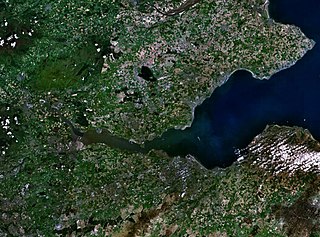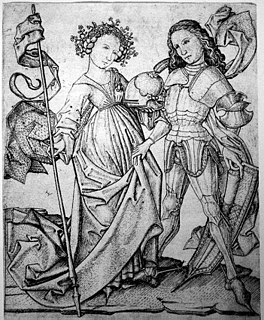 W
WRobert Henryson was a poet who flourished in Scotland in the period c. 1460–1500. Counted among the Scots makars, he lived in the royal burgh of Dunfermline and is a distinctive voice in the Northern Renaissance at a time when the culture was on a cusp between medieval and renaissance sensibilities. Little is known of his life, but evidence suggests that he was a teacher who had training in law and the humanities, that he had a connection with Dunfermline Abbey and that he may also have been associated for a period with Glasgow University. His poetry was composed in Middle Scots at a time when this was the state language. His writing consists mainly of narrative works. His surviving body of work amounts to almost 5000 lines.
 W
W"The Taill of the Cok and the Jasp" is a Middle Scots version of Aesop's Fable The Cock and the Jewel by the 15th-century Scottish poet Robert Henryson. It is the first in Henryson's collection known as the Morall Fabillis of Esope the Phrygian. The Cok and the Jasp is framed by a prologue and a moralitas, and as the first poem in the collection it operates on a number of levels, and in all its parts, to introduce the larger cycle.
 W
WThe Fox, the Wolf and the Husbandman is a poem by the 15th-century Scottish poet Robert Henryson and part of his collection of moral fables known as the Morall Fabillis of Esope the Phrygian. It is written in Middle Scots. As with the other tales in the collection, appended to it is a moralitas which elaborates on the moral that the fable is supposed to contain. However, the appropriateness of the moralitas for the tale itself has been questioned.
 W
WThe Morall Fabillis of Esope the Phrygian is a work of Northern Renaissance literature composed in Middle Scots by the fifteenth century Scottish makar, Robert Henryson. It is a cycle of thirteen connected narrative poems based on fables from the European tradition. The drama of the cycle exploits a set of complex moral dilemmas through the figure of animals representing a full range of human psychology. As the work progresses, the stories and situations become increasingly dark.
 W
W"Robene and Makyne" is a short poem by the 15th-century Scottish makar Robert Henryson. It is an early example of Scottish pastourelle written in a form of ballad stanza and is almost unique of its kind. Very simple in structure and plot, yet highly compressed, multi-layered and open in its possible interpretations, it exemplifies Henryson's ability to combine complexity and restraint. The brevity and balanced structure of the poem creates effects that invite comparisons with music.
 W
W"The Taill of Schir Chanticleir and the Foxe" is Fabill 3 of Robert Henryson's cycle of thirteen Morall Fabillis composed in Scotland in the later fifteenth century. It is the first of the fable in the poem to be based on Reynardian and beast epic sources rather than on any strictly Aesopian original, although the closest match from Aesop might be The Dog, the Cock and the Fox.
 W
W"The Taill of the Uponlandis Mous and the Burges Mous", also known as "The Twa Mice," is a Middle Scots adaptation of Aesop's Fable The Town Mouse and the Country Mouse by the Scottish poet Robert Henryson. Written around the 1480s, it is the second poem in Henryson's collection called The Morall Fabillis of Esope the Phrygian.
 W
WThe Tale of Orpheus and Erudices his Quene is a poem by the Scottish northern renaissance poet Robert Henryson that adapts and develops the Greek myth which most famously appears in two classic Latin texts, the Metamorphoses of Ovid and the Georgics of Virgil.
 W
WThe Testament of Cresseid is a narrative poem of 616 lines in Middle Scots, written by the 15th-century Scottish makar Robert Henryson. It is his best known poem. It imagines a tragic fate for Cressida in the medieval story of Troilus and Criseyde which was left untold in Geoffrey Chaucer's version. Henryson's cogent psychological drama, in which he consciously resists and confronts the routine depiction of Cressida (Cresseid) as simply 'false', is one of the features that has given the poem enduring interest for modern readers and it is one of the most admired works of northern renaissance literature. A modern English translation by Seamus Heaney, which also included seven of Henryson's fables from The Morall Fabillis, was published in 2009.